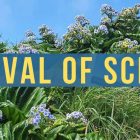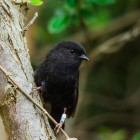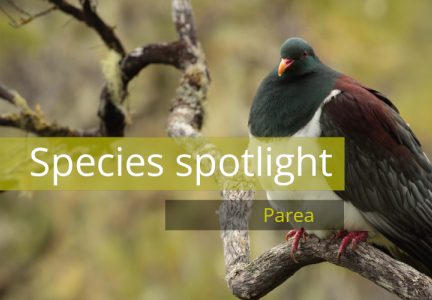
Blog and news
Species Spotlight: Parea
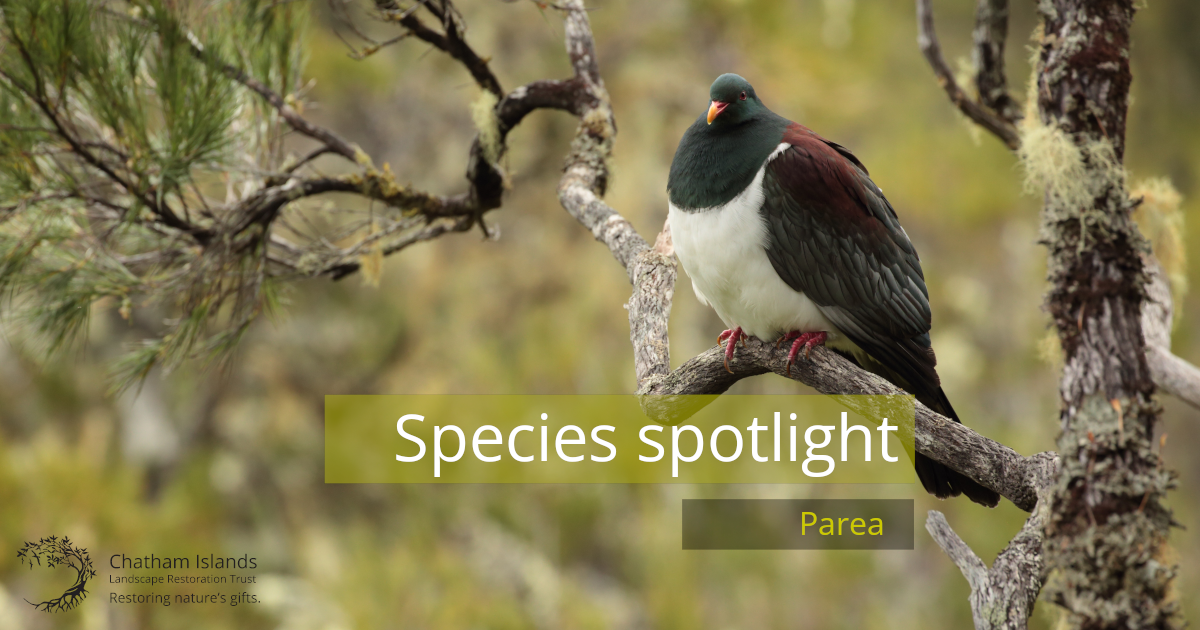
One of New Zealand's two native pigeon species, a heavyweight champion in the pigeon world, and rare but still found on main Chatham, the parea (or Chatham Island pigeon) is our pick for this species spotlight.
Same same different.
There are two species of pigeon in New Zealand – the infamous kererū, and the Chatham’s own parea. They look similar, but there are a few key differences between the birds.
First is obvious– location. Kererū haven’t been recorded in the Chathams. This means a common ancestor of the two must have made it across 800km of ocean from the mainland to the Chatham Islands in the past.
Physically they look similar, but the parea has a larger bill which is bright red with an orange tip. Kererū beaks are more uniform in colour. Parea are also greyer than kererū, and their grey green-washed rump contrasts with its darker back and wing coverts, a contrast lacking in the kererū.
And then there’s the other big difference…
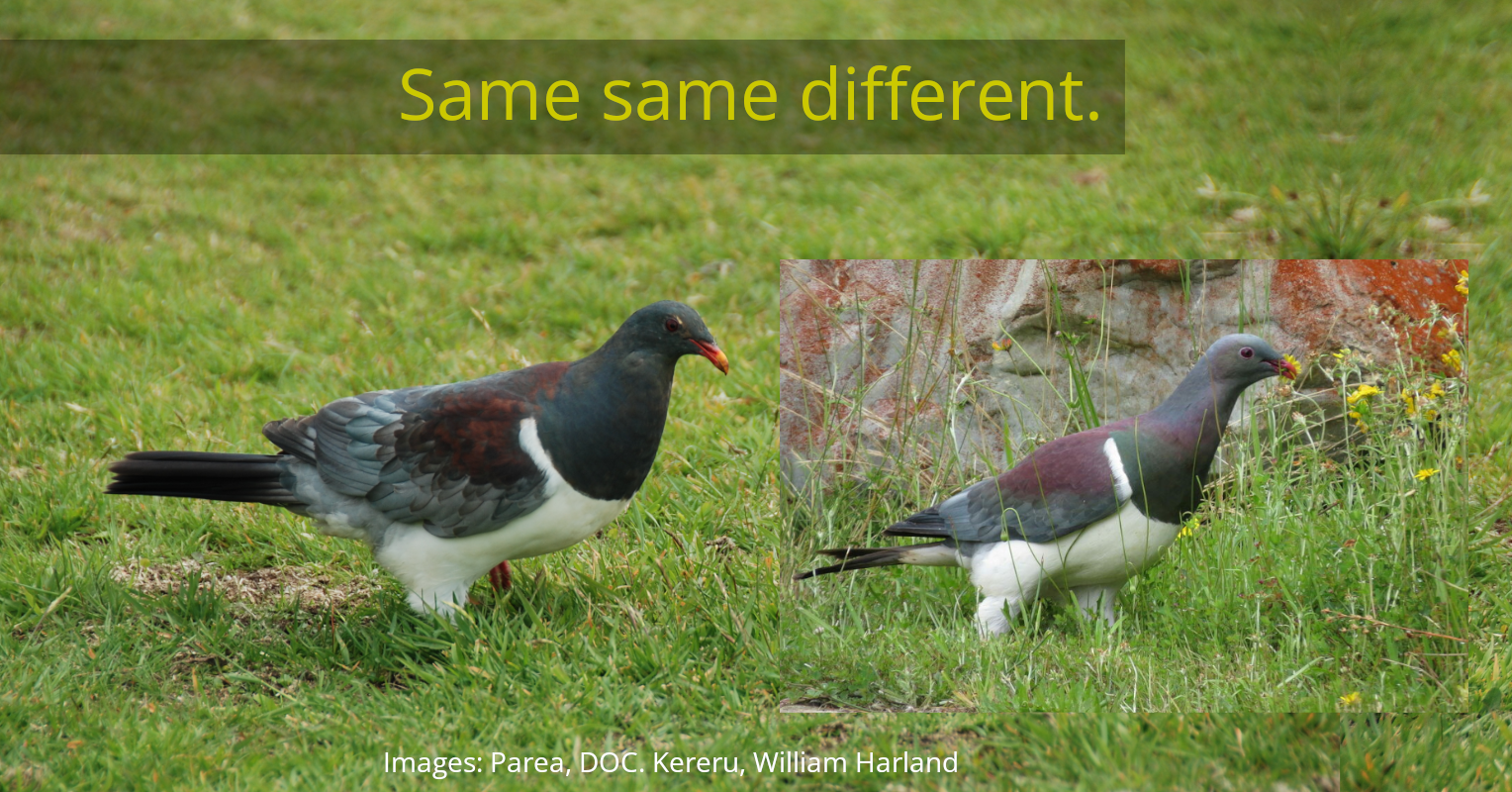
A parea (Image: DOC) and kereru (Image: William Harland)
It’s a heavy weight pigeon champion.
The Chatham Island pigeon is about 20% heavier than the New Zealand wood pigeon. Weighing in at about 790grams, this makes it one of the planet’s heaviest pigeons.
Parea are a conservation success story.
In 1937 they were common over most of the island, but by 1980 had dropped to about 40 individuals in the remnant forest of the southwest. Their decline – along with that of the CI tūī and tomtit – seems to have been linked with the arrival and spread of possums.
Predator control in the southwest started in the late 80s to help save the CI tāiko. This, along with landowners working to create reserves and fence and restore native bush, also helped save the parea. In 2009, a survey estimated there were more than 600 birds. Anecdotal evidence suggests the numbers have increased since, although another survey is needed to confirm.
An attempt was made to reintroduce them to Pitt. Some additional work, including the introduction of more birds, would be needed to help them establish.
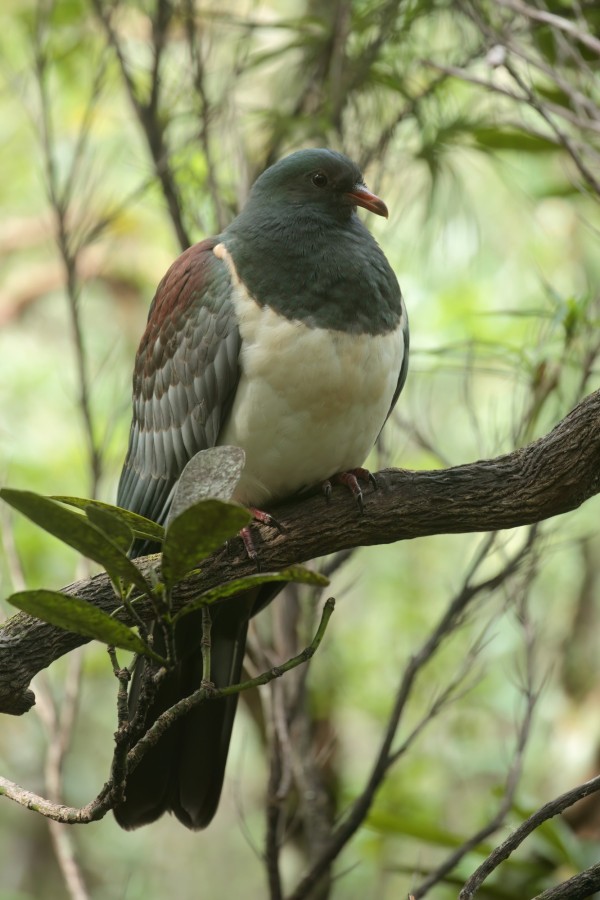
Parea. Image: Chatham Island Taiko Trust
They need the forest.
This highlights just how important good, safe habitat is. Parea are forest birds and even today they’re mainly found in the south in the Tuku Nature Reserve and surrounding covenants. A few residents have been recorded in patches of forest near the shorelines of Te Whanga Lagoon.
Over the last few years, parea have been increasingly reported in other parts of the island. An increase in predator control, habitat protect, and restoration plantings is a huge factor behind this.
The forest needs them.
Parea are essential for the health of forests. Like other birds that forage on fruit, they’re important seed dispersers. They’re also the only bird on the Chathams that’s big enough to swallow large fruit, like those of the kopi and nīkau. They mainly feed on leaves when there's none of their preferred food available.
Parea’s relationship to forests is a good example of how an ecosystem works – all the parts have evolved over a long period to function together. If we protect and restore forest plants and forest birds, it’ll be an upwards spiral.
They hang out on the ground.
These birds spend a lot of time on the ground (another big difference from kererū). It’s not uncommon to see parea grazing in open paddocks down south, especially on fresh clover leaves in spring. Their nests are often in low vegetation, or even on the ground.
This makes the Chatham pigeon – eggs, chicks, and adults – an easy target for feral cats, possums and rats. Weka have also been known to predate on them. Predator control is essential to help keep parea alive, and traps are placed very carefully to avoid the risk of bycatch.
A squadron of parea. Image: DOC Jess MacKenzie
Bumper hoho fruit = bumper parea chicks.
When the hoho (Chatham Island lancewood) have a good fruiting year, parea tend to have a good breeding year. When there are no fruit, there are no chicks. In a bumper hoho year, there can be hundreds.
The last bumper year was in 2017/18, and by May there were massive flocks and birds spread out across main Chatham. This spring the hoho are fruiting, so we’re hoping for another parea baby boom!
How to help
If you live on the island, you can help by supporting predator control and restoration planting efforts. Given parea are so dependant on hoho for breeding, include some hoho when you’re putting in plants. Fencing off remnant bush on your land to keep stock out will also help protect habitat for parea and other native species.
If you’re heading to the Chathams, be conscious of what you’re bringing across with you. Pest animals, plants and diseases are all a threat to the flora and fauna on the island.
You can also support our Trust’s work to help restore and protect our islands’ environment and species.
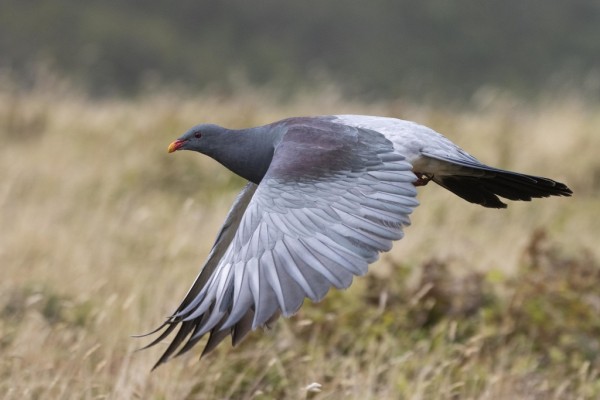
Parea in flight. Image: Oscar Thomas, iNaturalist

